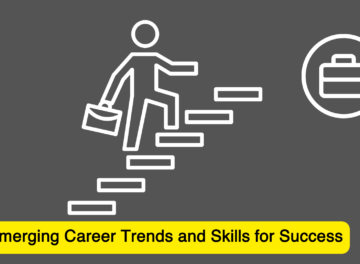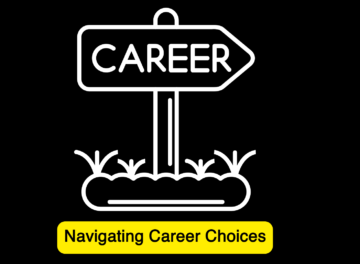Exploring Diverse Career Paths: What’s Right


Introduction to Diverse Career Paths
As I embarked on exploring career paths, I discovered numerous options available. Each path presents unique challenges and rewards.
Considerations:
- Interests and passions: What excites me daily?
- Skills and strengths: Which abilities set me apart?
- Creative Careers: Encompasses design, writing, and arts.
- Healthcare Careers: Focuses on medicine, nursing, and therapy.
- Business Careers: Includes marketing, finance, and management.
Understanding these options helps me align my career path with my personal goals and aspirations.
Assessing Your Skills and Interests
I must evaluate my strengths and passion to find a suitable career.
- Identify Core Skills:
- Analytical abilities
- Communication skills
- Technical proficiency
- Explore Interests:
- Hobbies and pastimes
- Subjects I’ve enjoyed studying
- Previous job roles I found fulfilling
- Take Self-Assessment Tests:
- Myers-Briggs Type Indicator (MBTI)
- Strong Interest Inventory
- CliftonStrengths
- Seek Feedback:
- Ask colleagues and mentors for input
- Reflect on performance reviews
Using this approach will provide a clearer picture of potential career paths that align with both my competencies and passions.
Traditional vs. Non-Traditional Careers
When considering career paths, I’ve explored both traditional and non-traditional routes.

Traditional careers often include:
- Medicine: Becoming a doctor or nurse
- Law: Pursuing a career as a lawyer
- Education: Teaching in schools or universities
These are well-trodden paths with established benchmarks.
Non-traditional careers can encompass:
- Freelancing: Graphic design, writing, or programming
- Entrepreneurship: Starting and running my own business
- Creative Arts: Pursuing acting, music, or visual arts
These careers often require a strong personal brand and flexibility.
Each path has unique challenges and rewards.
The Role of Education and Training
I discovered that education and training are pivotal in defining a career path. It shapes one’s expertise and opens doors to professions otherwise inaccessible.
- Foundational Learning: Schooling lays the groundwork for fundamental skills, such as math and communication.
- Specialized Training: Advanced courses and certifications hone specific abilities needed in specialized fields.
- Continuous Learning: Pursuing ongoing education ensures staying relevant in an ever-evolving job market.
Exploring In-Demand Industries
As I examine potential career paths, I focus on in-demand industries that promise growth and stability. The top sectors catching my attention include:
- Technology: In the rapidly evolving tech landscape, roles in software development, cybersecurity, and data science are highly sought after.
- Healthcare: With an aging population, careers in nursing, telemedicine, and medical research are booming.
- Renewable Energy: Pursuing a sustainable future drives demand for jobs in solar, wind, and energy storage technologies.
- Finance: As financial markets grow, expertise in investment banking, financial analysis, and FinTech is invaluable.
- Education: Opportunities in e-learning, educational technology, and special education are expanding.
The Gig Economy and Freelancing
I explored freelancing as an alternative career path. The gig economy allows me to employ my skills on a project-by-project basis.
Key Features
- Flexibility: I set my schedule, balancing work and personal life.
- Variety: Opportunities span various industries, enhancing my experience.

- Earnings Potential: Earnings fluctuate based on project availability and rates I negotiate.
Challenges
- Stability: Income can be unpredictable, causing financial volatility.
- Isolation: Working remotely often reduces face-to-face interaction.
- Benefits: I must manage my healthcare, retirement, and other benefits.
Exploring freelancing amplified my adaptability and self-motivation in the professional landscape.
Balancing Passion and Practicality
I must align my career choices with both my passions and practical considerations. Identifying what I love doing is crucial; this keeps me motivated and engaged. However, my interests must also provide financial stability.
Action Steps
- Self-Assessment:
- Reflect on my hobbies and skills.
- Take career aptitude tests.
- Research Careers:
- Explore job markets.
- Evaluate earning potential and job security.
- Combination Strategy:
- Pursue a practical job that funds my passions.
- Consider side gigs or freelance work in my passion areas.
Balancing these elements ensures I achieve both satisfaction and stability. Potential sacrifices are worth it for long-term fulfillment.
Technology and Its Impact on Career Choices
I’ve noticed how technology significantly shapes career options. Here are key points:
- Automation: I see industries rapidly adopting automation, reducing repetitive jobs but creating roles in robotics and AI.
- Remote Work: Technology allows me to consider remote jobs, broadening my options beyond local companies.
- New Fields: I’ve observed emergent fields like cybersecurity, data science, and blockchain which didn’t exist a decade ago.
- Lifelong Learning: Tech advances mean I must continuously update my skills to remain competitive. Online courses and webinars are my go-to resources for staying current.
Embracing technology is imperative for navigating today’s dynamic job market.
Networking and Mentorship
Seeking connections with experienced professionals guides career exploration. I attend industry events, online webinars, and local meetups to build relationships.
Strategies that work for me:
- LinkedIn: I regularly update my profile and participate in relevant groups.
- Informational Interviews: I reach out to industry leaders, asking about their career paths.
- Professional Organizations: I join groups related to my interests, gaining access to exclusive resources and events.
Mentorship is equally valuable. A mentor provides direction and encouragement. I identify potential mentors by observing individuals whose careers I admire, then approach them respectfully for guidance

Work-Life Balance and Job Satisfaction
Key Considerations
- Flexible Hours: I look for jobs that allow flexible work schedules.
- Remote Work: Options to work from home occasionally.
- Vacation Time: Adequate paid vacation and personal days.
- Supportive Environment: A workplace that prioritizes mental health and well-being.
Tips
- I assess my priorities daily.
- I ensure to communicate boundaries transparently.
- I leverage technology for efficiency.
Global Opportunities and Remote Work
I find that exploring global opportunities enriches my career. With remote work gaining acceptance, tapping into international job markets has never been easier.
Advantages
- Diverse Experience: Working internationally offers diverse professional experiences.
- Cultural Exposure: Interacting with global teams fosters cultural understanding.
- Flexibility: Remote roles often provide flexible schedules.
Challenges
- Time Zones: Coordinating across different time zones.
- Communication: Navigating language barriers.
- Isolation: Potential for feeling isolated without in-person interactions.
Embracing global opportunities and remote work can provide a unique, enriching career path.
Making a Decision: Steps to Take Next
I need to evaluate my interests and strengths to see which career paths align best with my passions and skills. Research potential careers thoroughly, considering factors like job stability, growth prospects, and work-life balance.
- Self-Assessment
- Identify strengths and weaknesses
- Understand personal values and goals
- Research Careers
- Explore job descriptions, industry outlooks
- Informational interviews with professionals
- Skill Development
- Identify necessary skills and qualifications
- Pursue relevant courses or certifications
- Network
- Attend industry events
- Connect with mentors and professionals online
- Make a Plan
- Set short-term and long-term goals
- Create a timeline for achieving objectives
Real-Life Success Stories
I’ve had the privilege of learning from numerous professionals who followed diverse career paths. Here are a few standout stories I found particularly inspiring:
- Martin, Software Developer: Switched from finance to tech after enrolling in online coding bootcamps. Now leads a team at a leading tech firm.
- Sara, Nurse: Transitioned from teaching to nursing in her late 30s, driven by a passion for healthcare. Excels in patient care and advocacy.
- Emily, Entrepreneur: Left a secure corporate job to start a sustainable fashion brand. Her company now features in major eco-friendly magazines.
These stories offer invaluable insights into the possibilities awaiting those willing to explore new directions.
Overcoming Challenges and Obstacles
When exploring diverse career paths, I inevitably face challenges. It’s crucial to recognize that setbacks are part of the journey. Here are strategies I use to overcome obstacles:
- Stay Adaptable: Flexibility in thinking helps me to pivot when needed.
- Seek Mentorship: Advisors provide guidance and insight.
- Continuous Learning: I commit to lifelong learning to sharpen skills.
- Resilience Building: Developing mental toughness aids in pushing through hardships.
To stay motivated, I remind myself why I started. Cultivating a supportive network, setting clear goals, and maintaining a positive mindset are essential in navigating career challenges.
Future Trends in Career Paths
I see several key trends shaping the future of career paths:
- Remote Work: Increasing adaptability and the necessity of digital skills.
- Gig Economy: Growth in freelance and contract-based roles.
- Technological Advances: AI, machine learning, and automation influencing job dynamics.
- Sustainability: Green jobs rising in sectors like renewable energy and sustainable agriculture.
- Continuous Learning: Increasing emphasis on lifelong learning and skills development.

- Diversity and Inclusion: Greater focus on creating inclusive workplaces.
These trends suggest that flexibility, adaptability, and ongoing education will be crucial moving forward.
Conclusion: Finding Your Unique Path
I know that identifying the right career can be challenging. It’s important to assess your interests, skills, and values. Here are steps I found helpful:
- Self-assessment: Understand your strengths and weaknesses. Tools like personality tests can be insightful.
- Research: Investigate various fields, industries, and roles. Use resources like LinkedIn and career websites.
- Networking: Connect with professionals to gain insights. Attend workshops and webinars.
- Trial and Error: Experience different roles through internships or freelance work.
- Continuous Learning: Embrace new skills and knowledge to stay relevant.
Ultimately, I recommend you trust your instincts and stay adaptable.



Hi, I’m Jack. Your blog is a treasure trove of valuable insights, and I’ve made it a point to visit daily. Kudos on creating such an amazing resource!